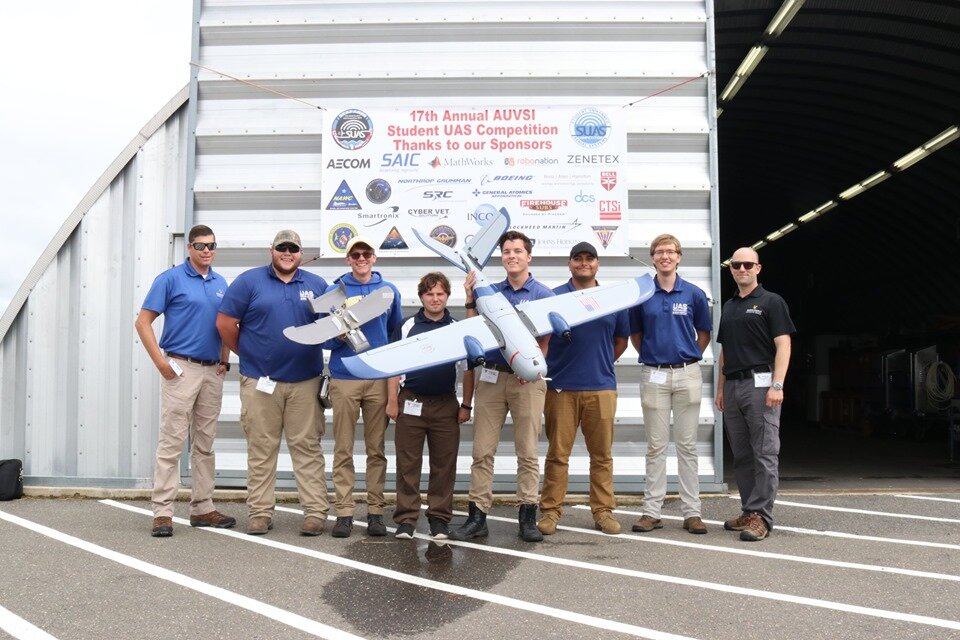SUAS Team at Embry-Riddle
Unity III
Student Unmanned Aerial Systems Competition 2020
Competition Background
The AUVSI SUAS Competition is designed to foster interest in Unmanned Aerial Systems (UAS), stimulate interest in UAS technologies and careers, and to engage students in a challenging UAS mission. The competition requires students to design, integrate, report on, and demonstrate a UAS capable of autonomous flight and navigation, remote sensing via onboard payload sensors, and execution of a specific set of tasks. The competition has been held annually since 2002. The Mission for the 2020 SUAS competition is based on package delivery. Multiple package delivery companies have tasked UAS to deliver packages to customers. These UAS must avoid each other, avoid static obstacles like buildings, identify potential drop locations, drop the package to a safe location, and then move the package to the customer’s location.
Team Background
This year, the main focus of the team is to acquire a larger aircraft in order to achieve stable flight characteristics while being able to handle a larger payload weight. We plan to use a Mugin-2, 2.6m wingspan aircraft with a T-Tail platform. This aircraft comes equipped with fixed landing gear and a pusher prop design. It will have a flight endurance up to one hour. To identify the targets and then categorize them, we will be using Python and OpenCV. Using a Pixhawk 2.1 flight controller and a Here2 GPS, which has been programmed with ArduPilot Mission Planner, we will be able to send the aircraft autonomous missions. To deliver the payload, we will be using a glider due to its ability to maneuver and reach the target with ease and accuracy. Once the glider has landed, an Unmanned Ground Vehicle (UGV) which has been equipped with tank treads, will be able to carry a payload to the next target. Our future tasks are to conduct the missions fully autonomously, without any manual interaction. This will require us to design and develop a way for the aircraft to take off and land autonomously.
Unity III - Features
Mechanical
Mugin-2 2.6m Wingspan T-Tail Airframe
Fixed Landing Gear
Pusher Prop Design
Electrical
Pixhawk 2.1 Autopilot Flight Controller
Here2 GPS
20,000mAh 6-Cell Battery
Software
Python
OpenCV
ArduPilot Mission Planner




